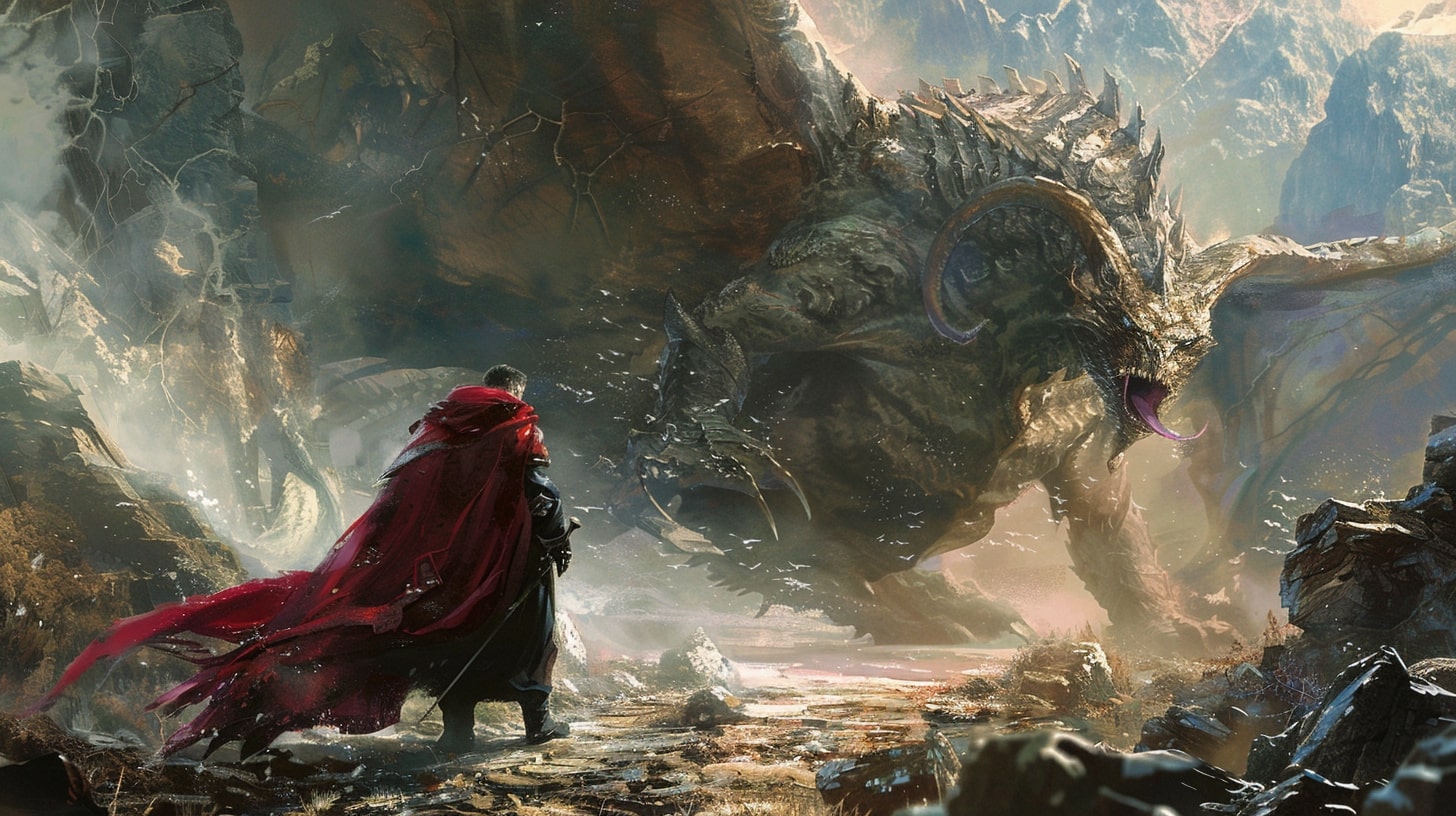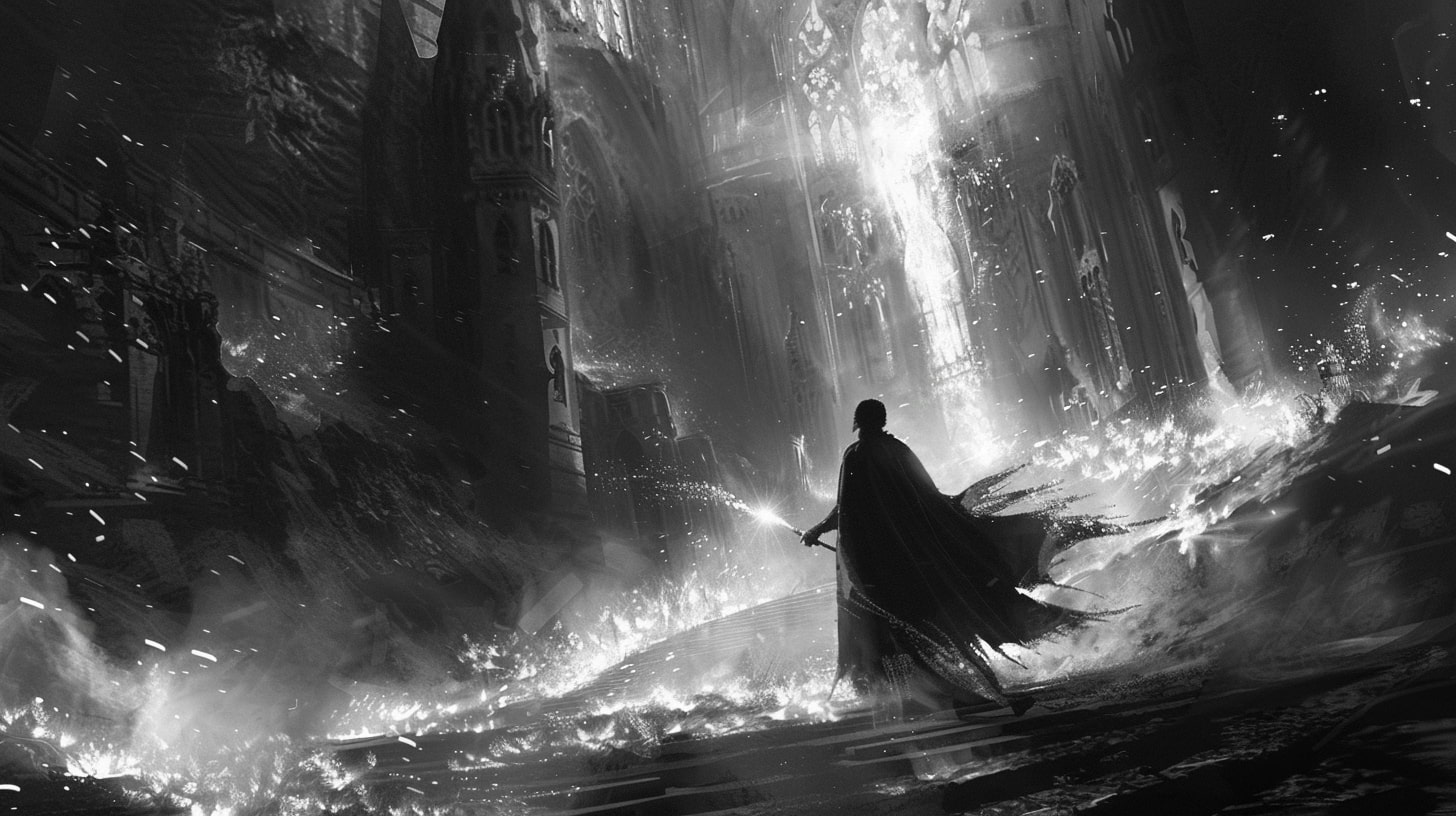The Art of Character Development
Welcome to the fascinating world of character development, where you have the power to create memorable and captivating characters that will leap off the page and into the hearts of your readers.
Crafting well-rounded characters involves a delicate balance of quirks, traits, and flaws that make them relatable, endearing, and sometimes, downright hilarious.
Think about your favorite characters. Were they ever perfect? Not at all! It's the character traits and flaws that a worldbuilder injects into a character to make them whole.
So let's see how you can start to add these things into your characters to make them memorable.
Creating Memorable Characters
When it comes to creating characters that leave a lasting impression, the key is to bring them to life with distinctive qualities and traits. Think about what makes your characters unique, whether it's their infectious laughter, their love for collecting obscure items, or their knack for getting into hilarious predicaments. These quirks add flavor to your characters and make them stand out from the crowd.
To dive deeper into the art of developing memorable characters, check out our article on character personality traits. It provides a comprehensive list of traits that can help you flesh out your characters and make them feel more authentic.
Embracing Quirks, Traits, and Flaws
Quirks, traits, and flaws are the building blocks of character development. Quirks add spice, traits define, and flaws humanize your characters. Embrace these elements to create characters that are multi-dimensional and captivating.
Unleash your imagination by infusing your characters with unusual hobbies and interests. Maybe your protagonist has a secret passion for collecting vintage rubber ducks or spends their weekends learning how to juggle flaming torches. These quirks add depth and intrigue to your characters, making them more engaging and relatable. For more ideas on quirks and interests, check out our article on character development prompts.
In addition to quirks, unique habits and mannerisms can make your characters come alive. Whether it's a nervous tick, a distinctive way of speaking, or an endearing habit of twirling their hair when deep in thought, these mannerisms create a visual image of your characters in the minds of your readers. So, don't shy away from exploring these delightful idiosyncrasies that make your characters truly one-of-a-kind.
To further explore the intricacies of character development, our article on character development exercises provides valuable insights and exercises to help you bring your characters to life on the page.
Remember, the journey of character development is an adventure in itself. Embrace the quirks, traits, and flaws of your characters, and watch them evolve into individuals that readers will remember long after they've closed the book.

Character Traits and Flaws: Quirks that Add Spice
When it comes to crafting captivating characters, adding quirks can bring them to life and make them more memorable. Quirks are those unique and unconventional characteristics that make a character stand out from the crowd. In this section, we'll explore two ways to incorporate quirks into your characters: unusual hobbies and interests and unique habits and mannerisms.
Unusual Hobbies and Interests
Give your characters hobbies and interests that are unexpected or out of the ordinary. These quirks can add depth to their personality and make them more relatable. Perhaps your protagonist, despite being a tough detective, has a secret passion for knitting adorable stuffed animals. Or maybe your villain, when not plotting world domination, spends their free time creating intricate origami sculptures.
By giving characters unusual hobbies and interests, you provide opportunities for them to showcase different facets of their personality. It can also serve as a source of conflict or a way to bond with other characters. For example, two characters who initially dislike each other might discover a shared love for extreme pogo sticking, leading to a surprising friendship.
Unique Habits and Mannerisms
Another way to add quirks to your characters is through unique habits and mannerisms. These are the little idiosyncrasies that make a character instantly recognizable. It could be a habit of twirling their hair when they're nervous, a tendency to speak in rhymes, or a habit of collecting mismatched socks.
These quirks not only make your characters more distinctive but also provide opportunities for characterization and storytelling. A character who constantly taps their fingers might reveal their impatience or nervousness in certain situations. A character who always wears mismatched socks might reflect their rebellious and carefree nature. These small details can add depth and complexity to your characters, making them feel more real and relatable.
By incorporating unusual hobbies, interests, and unique habits and mannerisms into your characters, you'll create a cast that is full of surprises and delights. Embrace these quirks and let them guide your character development process. Remember, it's the little things that can make a big difference in bringing your characters to life on the page.

Traits that Define
When crafting compelling characters, it's essential to give them traits that make them stand out and resonate with readers. These traits shape their personalities, motivations, and actions, ultimately defining who they are within your story. Let's explore two categories of traits that play a significant role in character development: positive traits and negative traits.
Positive Traits: The Heroes We Love
Positive traits are characteristics that make characters admirable and likable. These traits often drive them to do heroic deeds, fight for justice, and inspire others. From bravery and loyalty to intelligence and compassion, positive traits can make your characters relatable and endearing.
Here are some examples of positive traits:
| Trait | Description |
|---|---|
| Courage | The ability to face fear and take action in challenging situations |
| Empathy | The capacity to understand and share the feelings of others |
| Integrity | A strong moral and ethical backbone, guided by principles |
| Determination | The persistence and drive to achieve goals despite obstacles |
| Kindness | The inclination to be considerate, compassionate, and helpful |
When developing your characters, consider incorporating a mix of positive traits that align with their roles and goals in the story. Remember that even flawed characters can possess positive traits that make them compelling and relatable. For more ideas on building well-rounded characters, check out our article on character personality traits.
Negative Traits: The Villains We Love to Hate
Negative traits, on the other hand, are characteristics that add depth and complexity to characters. These traits can make your characters flawed, morally ambiguous, or even antagonistic. Negative traits provide opportunities for growth and conflict within your story, as characters grapple with their own shortcomings.
Here are some examples of negative traits:
| Trait | Description |
|---|---|
| Arrogance | An excessive sense of superiority and self-importance |
| Greed | An insatiable desire for wealth, power, or possessions |
| Manipulation | The use of deceit and cunning to control or influence others |
| Jealousy | A resentful longing for what others possess |
| Impulsiveness | A tendency to act without considering the consequences |
By incorporating negative traits, you can create well-rounded and compelling characters that readers love to hate. These traits can add depth and conflict to your story, as characters face internal struggles and external challenges. Remember that even characters with negative traits can undergo redemption or growth throughout the narrative. For more insights on character development, take a look at our article on character development worksheet.
By carefully considering the positive and negative traits of your characters, you can bring them to life on the page and create a memorable reading experience. Remember that a mix of traits, quirks, and flaws will help make your characters relatable, dynamic, and engaging.

Flaws that Humanize
A perfect character is as unrealistic as finding a unicorn in your backyard. Characters with imperfections are not only more interesting but also relatable. Flaws give them depth and make them feel more human. So, embrace those imperfections and let your characters shine!
Imperfections that Make Characters Relatable
Flaws come in all shapes and sizes, just like the people we encounter in real life. Whether it's a fear of spiders, a tendency to procrastinate, or a short temper, these imperfections add layers to your characters and make them relatable to your readers. When your characters have flaws, your audience can connect with them on a deeper level.
Consider giving your characters a mix of both minor and major flaws. Minor flaws, such as being forgetful or having a sweet tooth, can add charm and humor to your characters. On the other hand, major flaws, such as being overly jealous or struggling with addiction, create conflict and tension within the story. These flaws can drive the plot and provide opportunities for character growth and development.
Remember, flaws don't necessarily make your characters unlikeable. In fact, they can make your characters more endearing and relatable. Just like real people, your characters should be a mix of strengths and weaknesses, virtues and vices. This balance creates well-rounded and believable characters that readers can connect with.
Overcoming Flaws and Evolving
While flaws humanize your characters, their journey doesn't end there. Characters with flaws have the potential to grow and evolve throughout the story. Just as we strive to overcome our own imperfections, your characters can do the same.
Allow your characters to face the consequences of their flaws and learn from their mistakes. This can lead to personal growth and transformation, making their character arcs more compelling. Whether it's overcoming their fear of commitment, learning to trust others, or gaining control over their anger, the process of overcoming flaws adds depth and complexity to your characters.
Keep in mind that character growth doesn't necessarily mean completely eradicating flaws. Sometimes, it's about learning to manage or cope with them. This realistic approach allows your characters to remain true to themselves while still experiencing personal growth. It's all about finding that delicate balance.
By embracing the flaws of your characters and allowing them to evolve, you create a more dynamic and engaging narrative. Your readers will root for your characters as they navigate their imperfections, making their journey all the more satisfying.
In the next section, we'll explore strategies for building well-rounded characters by balancing quirks, traits, and flaws. So, let's dive in and continue our journey of character development together!
Note: To learn more about character development and other aspects of writing, check out our article on character development in worldbuilding.
Strategies for Building Well-Rounded Characters
Developing well-rounded characters is a crucial aspect of creating engaging stories. To ensure your characters resonate with readers, it's important to find the right balance between their quirks, traits, and flaws. Let's explore two key strategies to achieve this balance: balancing quirks, traits, and flaws and developing characters with depth.
Balancing Quirks, Traits, and Flaws
When crafting your characters, it's essential to strike a balance between their unique quirks, defining traits, and relatable flaws. Quirks add a touch of individuality and make your characters memorable. They can be unusual hobbies, interesting speech patterns, or even peculiar habits.
On the other hand, traits define who your characters are at their core, shaping their behavior and actions throughout the story. Positive traits can make your characters admirable and likable, while negative traits add complexity and conflict. Lastly, flaws humanize your characters, making them relatable and allowing room for growth and development.
To create well-rounded characters, consider the following tips:
Mix and match: Combine different quirks, traits, and flaws to create unique and multidimensional characters. For example, a character with a quirky obsession for collecting vintage stamps (quirk) might possess a strong sense of justice (trait), but struggle with impulsiveness (flaw).
Contrast and conflict: Introduce contrasting traits and flaws to create internal conflicts within your characters. This adds depth and tension to their journeys. For instance, a character who is fiercely independent (trait) may also struggle with trust issues (flaw), leading to conflicts in relationships.
Reveal gradually: Provide glimpses of your characters' quirks, traits, and flaws throughout the story, allowing readers to discover and connect with them over time. This gradual reveal adds intrigue and keeps readers engaged.
Developing Characters with Depth
To make your characters truly come alive, it's important to develop them with depth. Depth refers to the complexity and layers of your characters, going beyond surface-level descriptions. Here are some strategies to achieve this:
Backstory: Create a detailed backstory for your characters, including their upbringing, past experiences, and significant life events. This helps you understand their motivations and influences their behavior and decisions throughout the story. For ideas on developing character backstories, check out our article on character backstory ideas.
Motivations and goals: Determine your characters' motivations and goals. What drives them? What do they aspire to achieve? Understanding their desires and ambitions adds depth and provides a clear direction for their character arcs. For more insights on character motivation, take a look at our article on character motivation in writing.
Conflicts and growth: Introduce conflicts and challenges that test your characters' strengths, weaknesses, and beliefs. Through these obstacles, your characters can experience growth and transformation, making their journeys compelling and relatable. For inspiration on character conflicts and resolutions, visit our article on character conflicts and resolutions.
By employing these strategies, you can build well-rounded characters that captivate your readers' imaginations. Remember to explore our articles on character development exercises and character development prompts for additional guidance and inspiration. With a balanced blend of quirks, traits, and flaws, as well as a deep understanding of your characters, you'll unlock their full potential and bring them to life on the page.
Putting It All Together
Now that you have gained a deeper understanding of character development and the various elements that contribute to creating well-rounded characters, it's time to put it all together. In this section, we will explore exercises for character development and discuss how to bring your characters to life on the page.
Exercises for Character Development
Character development is a dynamic process that requires exploration and creativity. To help you further develop your characters, here are a few exercises you can try:
Character Personality Traits: Start by brainstorming a list of character personality traits. Select a few that resonate with your character and consider how these traits influence their behavior, relationships, and overall story.
Character Development Worksheet: Utilize a character development worksheet to delve deeper into your character's backstory, motivations, and goals. This will provide a solid foundation for building a complex and believable character.
Character Backstory Ideas: Explore different character backstory ideas to add depth and complexity to your characters. Consider their upbringing, past experiences, and significant life events that have shaped who they are today.
Character Development Prompts: Use character development prompts to spark your imagination and uncover new layers of your character. These prompts can help you explore their fears, dreams, secrets, and more.
Character Relationships and Dynamics: Consider the character relationships and dynamics within your story. Develop connections between your characters and explore how these relationships can drive the narrative forward.
Bringing Characters to Life on the Page
Once you have developed your characters, it's essential to bring them to life on the page. Here are a few tips to help you accomplish this:
Show, Don't Tell: Instead of simply telling the reader about your character's traits and flaws, show them through their actions, dialogue, and interactions with others. This allows the reader to form their own connection with the character.
Dialogue and Voice: Pay attention to your character's unique dialogue and voice. Each character should have their own distinct way of speaking, reflecting their personality, background, and motivations.
Appearance and Description: Provide vivid descriptions of your character's appearance to help readers visualize them. Use details that are relevant to their personality and story.
Character Arc: Consider your character's arc and how they will evolve throughout the story. Show their growth, transformation, and the lessons they learn along the way.
Psychological Development: Explore the psychological development of your characters. Delve into their thoughts, emotions, and inner struggles to create multidimensional and relatable characters.
Remember, the process of character development is an ongoing one. Continuously revisit and refine your characters as your story unfolds. By investing time and effort into creating fully realized characters, you will captivate readers and bring your story to life in an engaging and memorable way.





























